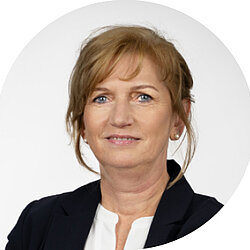Scoliosis is a lateral deviation of the spine with rotation of the vertebral bodies. The spine is twisted and bent. The degree of curvature can vary.
What is the cause of scoliosis?
In most cases, there is no known direct cause for scoliosis. It has now been confirmed that there may be a certain predisposition. However, there is no talk of direct heredity. In rare cases, the cause is a congenital malformation, muscle or nerve disease or an accident.
Symptoms: How can I recognize scoliosis?
While a slight deformation of the spine can only be recognized on closer inspection or as part of a further examination, a severe deformation is clearly visible. It is not uncommon for one shoulder to hang lower than the other, the pelvis is crooked, the shoulder blade protrudes and, in very severe cases, the affected person also has a rib hump.
Diagnosis of scoliosis
A physical examination and x-rays confirm the suspicion of scoliosis. In addition, a large X-ray of the entire lumbar and thoracic spine is used to analyze the severity of the scoliosis.
Scoliosis usually develops during a growth phase, for example before or during puberty. As the curvature can worsen significantly during growth, early diagnosis is important in order to take even slight deformities seriously and start treatment
Therapy: How is scoliosis treated?
Treatment of scoliosis should begin early on at a young age, as long as the spine has not yet fully grown. At this stage, conservative treatment with an adapted corset is still possible.
When is spinal surgery necessary?
In severe cases of scoliosis, surgery should be considered in order to prevent long-term health problems. For example, the curvature of the spine can impair lung function and physical activity in the long term. Back pain is also possible, as signs of wear and tear on the spine occur more easily. However, the decision to have surgery must always be made on an individual basis.
In an operation lasting several hours, the shape of the spine is corrected or sections are stiffened using special screws and thus stabilized. As a rule, scoliosis is operated on lying on the stomach, but this also depends on the individual.
Sport with scoliosis
People with scoliosis can also do sport. This is even recommended in order to strengthen the entire back and core muscles. Sport can therefore support the physiotherapy that has already been prescribed. Nevertheless, the question of "sport with scoliosis" must always be considered on an individual basis, with regard to the extent of the scoliosis, the age of the patient, pain and the type of sport or intensity of sport in question.
Gentle and suitable sports are swimming, cycling and Nordic walking. Sports such as tennis or squash, on the other hand, are less suitable as they put additional strain on the spine due to the jerky and impact-like movements.

Andrea Huhn
Secretariat Special Spine Surgery
- Phone+49 2351 945-2551
- Fax +49 2351 945-2552
- sekretariat.meier@hellersen.de

